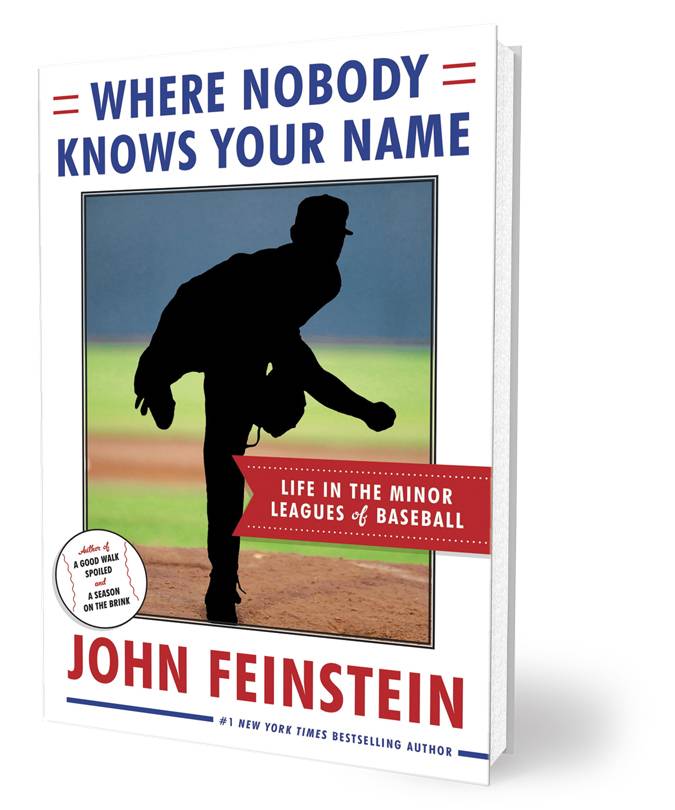
Where Nobody Knows Your Name: Life in the Minor Leagues of Baseball By John Feinstein, $27.
In his latest sports book, Where Nobody Knows Your Name, John Feinstein tells an anecdote about former Dodgers manager Tommy Lasorda, from his days managing in Triple-A. Seems the guys were giving headstrong phenom Bobby Valentine a hard time. Lasorda told the other players to thank Valentine, “because we need the rest of you guys around here so we can field a team for him to play on.”
Feinstein calls this “hyperbolic” but notes “a large chunk of truth in it too.” Actually, it might be the key truth about Triple-A ball. Baseball’s mezzanine is really the bargain basement, staffed with the ever-hopeful wanna-bes and also-rans whose jobs are really to help baseball develop true “prospects.”
Feinstein spent the 2012 season roaming some of the better-known precincts of Triple-A, from a chilly opening day at Coca-Cola Field in Buffalo (half the International League teams have succumbed to the lure of naming rights revenue) to the championship game in Durham Bulls Athletic Park. Feinstein does not mention visiting Las Vegas’ Cashman Field, but some in his cast of characters pass through, doggedly sustaining dying dreams.
Chris Schwinden, for instance, found himself on the Cashman mound after being released by the Mets. After one “awful” outing, he was released by the Blue Jays, then found his way back to the Mets’ Buffalo team, after playing for four different organizations in little more than a month. His odyssey pales beside that of Jon Lindsey, who holds the dubious honor of the longest slog through the minors before his cup of coffee in 2010; in 2012 he was still “an accident away” from returning. For every Nate McLouth, who eventually returned to the bigs—and a big contract—after being released, there are countless players like Brett Tomko, unable to call it quits as he neared 40.
Only occasionally does Feinstein provide a glimpse into the minor leagues that fans enjoy—the wacky promotions, the intimate scale, the chance to see stars, both future and falling. His view is from the clubhouse, at a level where no one wants to be, where players cheer teammates’ call-ups and track big-leaguers’ injuries, hoping for their moment. His prose is breezy and unremarkable, but he tends to get out of the way and let his sources tell their own stories. Some readers will applaud their chasing a deathless dream, but others will likely just find it sad.







